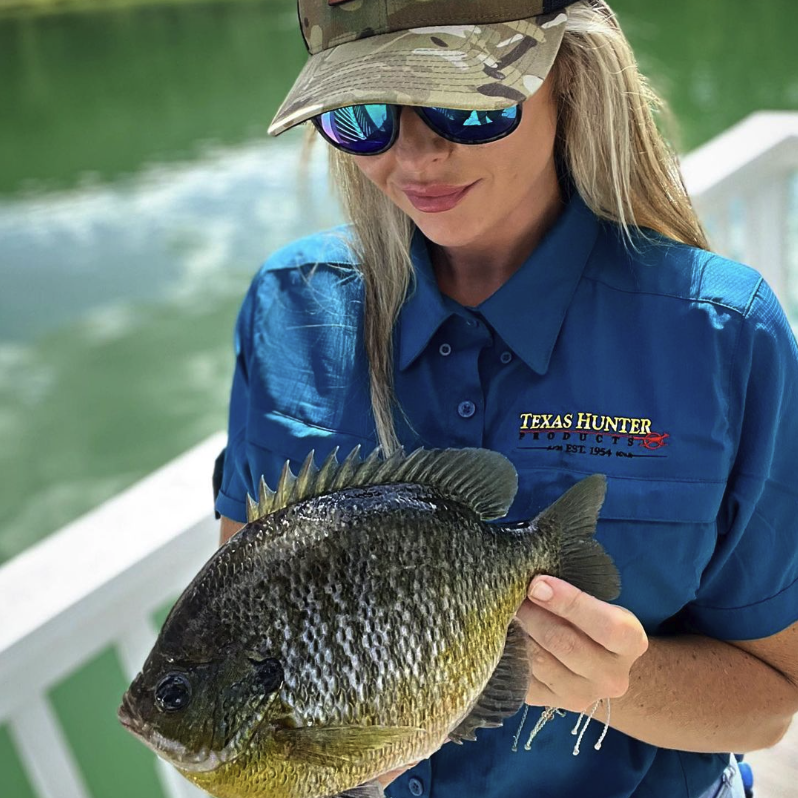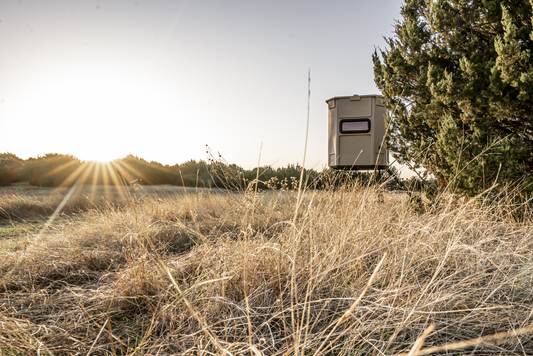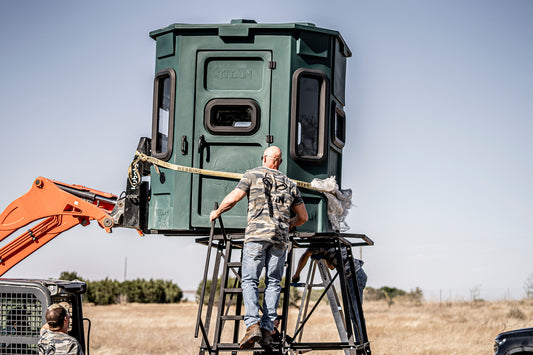Are you ready to take your pond to the next level? Want to grow bigger and healthier bass and bluegill? Well, it's time to invest in a fish feeder! In this article, we'll cover all the details you need to know about using fish feeders to grow healthy and thriving fish in your pond.
The Importance of Automatic Fish Feeders
First, let's talk about why automatic fish feeders are so important. Consistent feeding is key to ensuring your fish grow big and strong. Supplemental feeding is important for fish in a pond because it ensures that they receive all the necessary nutrients they need to grow and remain healthy. Fish that are not getting enough food can become malnourished, weak, and vulnerable to diseases.
In a natural ecosystem, fish can find their own food by feeding on algae, insects, and other small organisms. However, in a pond environment, the amount of natural food available may be limited, especially if the pond is overcrowded or has a low nutrient level. Supplemental feeding can help to provide the necessary nutrition that the fish need to thrive.
Do bass eat the fish food?
Short answer...No, not usually. Using an automatic fish feeder on your pond can indirectly help grow bigger bass by providing a consistent food source for smaller fish that the bass feed on. The smaller fish consume the fish food that is dispensed by the feeder, which in turn increases their population and growth rate.
As the smaller fish population grows, the bass have a larger and more readily available food source, allowing them to grow larger and healthier. Additionally, the consistent availability of food can help the bass reach their maximum growth potential.
Furthermore, the increased population of smaller fish can also create a more natural and balanced ecosystem in your pond, as they serve as a food source for other aquatic animals such as birds, turtles, and frogs.
Therefore, while the bass themselves may not directly consume the fish food from the automatic feeder, the feeder indirectly contributes to their growth and overall health by providing a consistent food source for the smaller fish they feed on.
What Is The Best Automatic Fish Feeder
Texas Hunter and Sweeney fish feeders are both great options for feeding fish in ponds or lakes, but they differ in their design and construction, feed capacity, feed distribution system, and price. Choosing the right fish feeder ultimately depends on the specific needs of your pond or fishing spot, your budget, and your personal preferences. Both Texas Hunter and Sweeney are top-of-the-line units!
Size and quantity are the most important factors to consider. The DF125 from Texas Hunter and the AFC125 from Sweeney both ship UPS and will be considerably less cost to ship. The larger directional units such as the DF425 from Texas Hunter and the AFC425 from Sweeney will be shipped via LTL can be a bit more costly. Keep in mind tho, these feeders are designed to last decades! If having a larger capacity unit is important to you, just buy it. These feeders are an investment into your time, just as much as they are an investment into your pond.
Most Popular Small Automatic Fish Feeder
Texas Hunter 70 lb. Lake & Pond Directional Fish Feeder with Straight Legs - DF125DL
The DF125 may be one of the smallest feeders we offer, but that doesn't mean it lacks any features that the big boys offer. This feeder is great if you have a small pond or live near your pond and don't mind visiting frequently to keep the feeder filled.
Texas hunter Products is well known for manufacturing top quality products and their line of fish feeders for lakes and ponds is no different. In fact, they work so well, they may be the very last fish feeder you ever buy! These feeders aren't just for small ponds! Even if you live on a larger lake, well planned feeding programs will program fish to congregate in the area of your feeder.
Also, since the DF125 is smaller in size shipping cost is much cheaper for this unit. Often times it makes more sense to buy multiple small units than having a single large unit. These units are nearly bulletproof and in the rare occasion a problem should arise, parts are very inexpensive and easy to swap.
Sweeney Feeders Directional Fish Feeder – 125 lb. Capacity - Green - Dock Legs
The Sweeney Feeders AFC125 comes packed with a host of impressive features that make it one of the most versatile automatic feeders on the market. First off, the feeder is available in two finishes, Galvalume or Green, allowing you to choose a style that fits your personal preference or property's aesthetics.
This automatic feeder can handle a large variety of feed, including 1/8 in. – 1/2 in. pellets, making it an excellent choice for feeding a variety of animals. The feeder is powered by a 12-volt battery and includes a premium timer that can feed up to 24 times a day, with customizable feeding duration times. The adjustable motor speeds and casting distances for each feeding further enhance its versatility.
Overall, the Sweeney Feeders AFC125 is a top-of-the-line automatic feeder that boasts an impressive array of features, making it a smart choice for anyone looking to streamline their feeding program while ensuring their fish are well-fed.
Most Popular Large Automatic Fish Feeder
Texas Hunter 250 lb. Lake & Pond Directional Fish Feeder with Straight Legs
The DF425 is the largest feeder in the Texas Hunter Feeders lineup. This feeder is a beast!
Sweeney Feeders Directional Fish Feeder – 425 lb. Capacity - Green - Angled Legs
THE BIG BOY! The Sweeney AFC425 feeder is the largest in our lineup of feeders. It's perfect for ponds and lakes that you do not visit often or areas that require a heavy amount of feed.
Get the solar charger. Just do it. Don't think twice, don't even look at the price. If it is offered... buy it! You will save yourself many hours of frustrations with dead batteries, gas for trips out to the pond after your feeder dies, and countless other reasons. This isn't a sales tactic. We don't operate like that. We sell A LOT of feeders and 97% of our feeder orders will opt for the solar charger. The other 3 percent usually already have a solar charger for their unit. It's a game changer and I will always recommend it!
How Many Fish Feeders Do I Need on My Pond?
The number of fish feeders you need depends on the size and shape of your pond. A good rule of thumb is to have one feeder for every acre of water. For example, if you have a two-acre pond, you will need two fish feeders. This will ensure that all areas of your pond are covered and your fish are getting the nutrition they need. Of course, everyones goals are different. If you are only trying to subsidize the health of you pond, one per acre may be a bit aggressive.
What Kind of Food Do I Use in My Fish Feeder?
When feeding your fish, it's important to use high-quality fish food. Different types of fish require different types of food, so it's important to choose a food that is appropriate for your fish. To promote the growth of large bass and bluegill in your pond using fish feeders like Texas Hunter Products, you'll want to use a high-quality fish feed that is formulated specifically for these species. Here are a few things to keep in mind when selecting a fish feed:
- Pellet size: Choose a pellet size that is appropriate for the size of your fish. Too small, and the larger fish won't be able to eat them; too large, and the smaller fish won't be able to swallow them.
- Feeding frequency: Set your fish feeder to dispense feed 2-3 times per day, in amounts that your fish can consume within 5-10 minutes.
Some popular brands of fish feed for bass and bluegill include Purina Aquamax and Skretting. Be sure to follow the feeding instructions provided by the manufacturer, and monitor the growth and health of your fish regularly.
How Often Will I Have To Refill My Automatic Fish Feeder?
The amount of feed your feeder goes through will depend on the size of your feeder and the number of fish in your pond. A typical feeder can hold anywhere from 50 to 150 pounds of feed. For a small pond with only a few fish, you may only need to refill your feeder once every couple months. However, for larger ponds with more fish, you may need to refill your feeder every month.
It's important to note that overfeeding your fish can lead to health problems and poor water quality. It's better to start with a small amount of feed and gradually increase it as your fish grow and become more active.
What Schedule Should I Start With?
When you first start using your fish feeder, it's best to start with a simple feeding schedule. Begin by feeding your fish once in the morning and once in the evening, using a small amount of feed to start. After a few days, observe your fish to see if they are consuming all of the food or leaving any behind. If they are consuming all of the food, you can gradually increase the amount of feed and the frequency of feedings.
As your fish grow and become more active, you may need to adjust your feeding schedule to ensure they are getting the proper amount of nutrition. For example, during the summer months when fish are more active, you may need to increase the frequency of feedings to three or four times a day.
Tips for Successful Feeding
To ensure successful feeding with your fish feeder, there are a few additional tips to keep in mind:
- Adjust Feeding During Temperature Changes: During periods of extreme hot or cold weather, your fish's feeding habits may change. Adjust your feeding schedule accordingly and be sure to monitor water quality during these times.
- Position Your Feeder Properly: The placement of your feeder is important for even distribution of food and to prevent overfeeding in certain areas of your pond. Position your feeder in a central location, away from overhanging trees or bushes that could drop debris into the water.
- Consider the Size of Your Fish: As your fish grow, their feeding habits will change. Larger fish may require larger pellets or more frequent feedings, while smaller fish may need smaller pellets or less frequent feedings. Monitor your fish and adjust your feeding schedule accordingly.
- Keep Your Feeder Clean: Regularly clean your feeder to prevent mold and bacteria from growing and to ensure that it is functioning properly. A dirty feeder can lead mechanical issues and feeder failure.
- Monitor Water Quality: Feeding your fish can have an impact on water quality, so it's important to monitor the pH, oxygen levels, and ammonia levels in your pond to ensure they are within a healthy range. Test your water regularly and make adjustments as needed.
Using fish feeders can be a great way to grow bigger and healthier bass and bluegill in your pond. With the right feeding schedule, high-quality fish food, and proper maintenance, you can ensure that your fish are getting the nutrition they need to thrive. And who knows, you may even be able to catch a trophy-sized fish in your pond someday!
Automatic fish feeders are a worthwhile investment for anyone looking to improve the health and size of their bass and bluegill. Just remember to choose the right kind of food, monitor water quality, adjust feeding schedules as needed, and keep your feeder clean and properly positioned. With these tips in mind, you'll be on your way to a thriving and healthy pond in no time.



